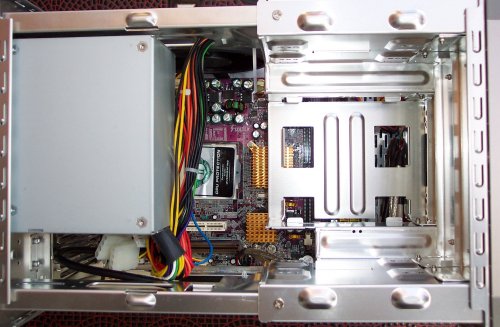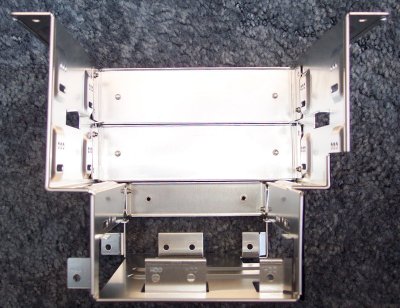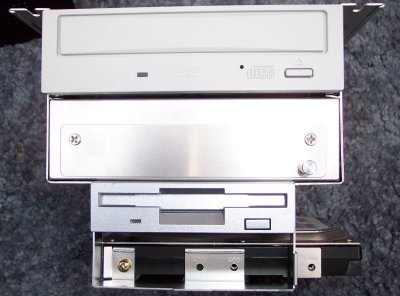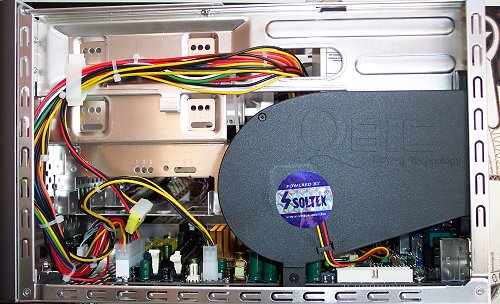Internals

As mentioned previously, the top comes away with just three thumbscrews. Initial build quality impressions are good. The chassis is strong, rattle-free, and roomier than you might at first think. Soltek use a drive tray that's similar to Shuttle's. The PSU mounting, however is Soltek's own work.


The front cover highlighted the fact that Soltek's cube had the ability to hold more devices than competing solutions. Two 5.25" and two 3.5" drives can be mounted in the caddy. The hard drive is mounted in a sideways fashion, much like Mesh's preferred layout. We've installed a floppy drive just above the hard drive, but there's little stopping a user from using dual hard drives, and now with 300GB discs hitting the market recently, the Soltek could be one hell of a fileserver.

The PSU's from Enhance electronics and is rated to 200w. Recent Shuttles have specified 220w and even 240w PSUs, but quality 200w PSUs have shown themselves to be capable of running frighteningly fast systems. 10A on the 12v line is our only area of concern. Soltek does have other barebones units in its range, and we've seen 250w Enhance PSUs present in some of the more power-hungry models.

Removing away both the drive tray and PSU leaves us with an uninterrupted view of the internals. The B7A-F is a 255mm x 180mm motherboard that houses NVIDIA's nForce2 chipset (note that this is not the 400FSB certified Ultra model). The twin bridges that make up this nF2 are the nForce2 IGP (Integrated Graphics Processor) North Bridge and the feature-filled MCP-T (Media and Communications Processor - Turbo). The former includes an integrated GeForce4 MX class of GPU that's proven itself to be a class above comparative Intel Extreme offerings. It derives its internal bandwidth from the system's, that is, from the North Bridge's. That's also how Soltek has managed to incorporate dual VGA outputs and S-Video feeds from the rear panel, too.
In previous cases, taking a chunk out of system memory for on-board graphics purposes had manifested itself into significantly degraded performance. However, with the nForce2's dual-channel memory architecture and the Socket-462 CPUs' inability to access the total memory bandwidth offered by the chipset, integrated video has a chance to shine.
The MCP-T is notable for providing FireWire support and the lovely-sounding hardware-accelerated NVIDIA 6-channel APU. Both constituent parts are hidden under passive heatsinks.

A side shot from one side shows Soltek's innovative thought processes. Its IcyQ cooling system a large fan that pushes cooler air towards the CPU area. The comparatively small confines of a mini barebones unit is an oven in waiting. IcyQ works in much the same fashion as a card blower in a regular PC, and it does its job remarkably well.

Here's the IcyQ from the other side. It's thoughtful, intuitive design.









